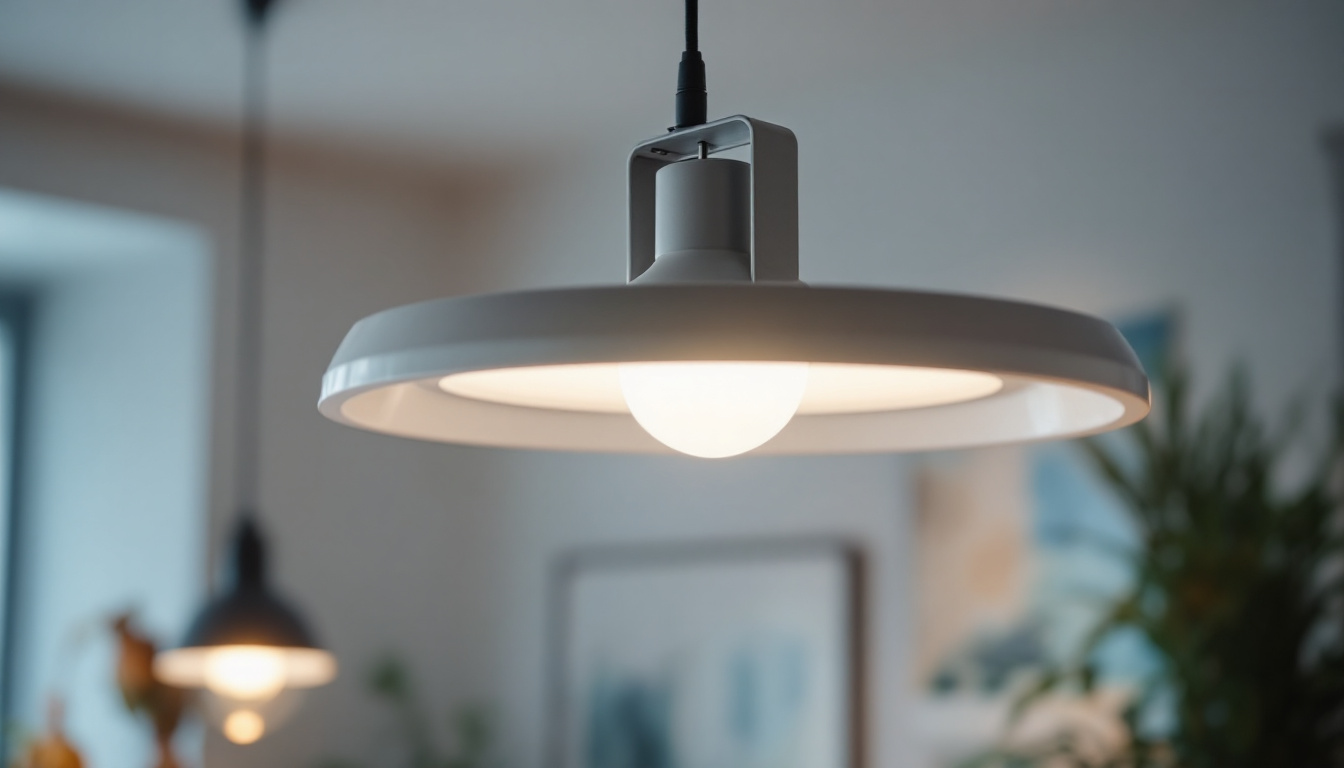
In the realm of lighting design and installation, the importance of selecting the right components cannot be overstated. Among these components, the light fixture mounting bracket plays a crucial role not only in the physical stability of the lighting fixture but also in its overall energy efficiency. Understanding the impact of mounting brackets on energy consumption can lead to more sustainable practices and cost savings for both contractors and clients.
Light fixture mounting brackets serve as the foundation for securely attaching light fixtures to ceilings or walls. These brackets are designed to support the weight of the fixture and ensure its proper alignment. However, their role extends beyond mere support; they can significantly influence the performance and efficiency of the lighting system.
One of the primary functions of a mounting bracket is to provide structural integrity. A well-installed bracket ensures that the fixture is securely fastened, reducing the risk of accidents caused by falling lights. This is especially critical in commercial settings where safety regulations are stringent. A secure fixture not only enhances safety but also contributes to the longevity of the lighting system, reducing the need for frequent replacements. In residential spaces, the aesthetic appeal of the lighting can also be compromised if fixtures are not properly mounted, leading to a disorganized or unkempt appearance.
Moreover, the choice of materials used in mounting brackets can play a significant role in their effectiveness. Brackets made from high-quality metals, such as stainless steel or aluminum, are not only durable but also resistant to rust and corrosion, ensuring that they maintain their integrity over time. This is particularly important in environments with high humidity or temperature fluctuations, where inferior materials might fail, leading to potential hazards. Therefore, investing in quality mounting brackets is essential for both safety and aesthetic considerations.
Heat management is another critical aspect influenced by the choice of mounting bracket. Proper heat dissipation is essential for maintaining the efficiency of lighting fixtures, particularly LED systems that are sensitive to temperature fluctuations. A mounting bracket designed to facilitate airflow can help dissipate heat more effectively, prolonging the lifespan of the fixture and maintaining optimal performance. This, in turn, can lead to lower energy consumption as fixtures operate more efficiently. Additionally, innovative designs such as those incorporating heat sinks can further enhance thermal management, making them ideal for high-output lighting applications.
Furthermore, the positioning of the mounting bracket can also affect how light is distributed in a space. By allowing for slight adjustments in angle or height, some brackets enable users to direct light more effectively, enhancing the overall ambiance and functionality of a room. This is particularly beneficial in spaces where task lighting is essential, such as kitchens or workspaces, as it allows for better illumination of specific areas without causing glare or shadows. As a result, the right mounting bracket not only supports the fixture but also plays a crucial role in optimizing the lighting experience.
The design of a light fixture mounting bracket can have a profound impact on energy efficiency. Factors such as material, shape, and installation method all contribute to how effectively a lighting system can operate.
The choice of materials used in mounting brackets can influence both thermal conductivity and weight. For instance, lightweight materials can reduce the overall load on the electrical system, potentially lowering energy consumption. Conversely, materials with high thermal conductivity can help in managing heat more effectively, ensuring that the lighting fixtures remain within their optimal operating temperatures. This is particularly important for energy-efficient lighting solutions that rely on consistent performance. Additionally, the selection of sustainable materials, such as recycled metals or eco-friendly composites, can further enhance the environmental benefits of the lighting system, aligning with broader sustainability goals.
The shape of a mounting bracket can also affect energy efficiency. Brackets that allow for better positioning of fixtures can enhance light distribution, reducing the need for additional fixtures to achieve the desired illumination levels. This can lead to significant energy savings, especially in large spaces where multiple fixtures may otherwise be required to achieve adequate lighting. Moreover, innovative designs that incorporate adjustable angles or modular components can provide flexibility in lighting arrangements, allowing users to adapt their setups for varying tasks or events without compromising on energy use. Such versatility not only improves the functionality of the lighting system but also contributes to a more efficient use of resources over time.
The installation method of mounting brackets can also play a crucial role in energy efficiency. Proper installation ensures that fixtures are securely positioned and aligned, which can minimize light loss due to misdirection or improper angling. Techniques such as using laser alignment tools can enhance precision during installation, ensuring that each fixture is optimally placed for maximum effect. Additionally, considering the ease of installation can lead to reduced labor costs and time, making energy-efficient lighting solutions more accessible to a wider audience. When brackets are designed for straightforward installation, it encourages more widespread adoption of energy-efficient technologies, further promoting sustainability in lighting practices.
Proper installation techniques are essential for maximizing the benefits of light fixture mounting brackets. Even the best-designed bracket can fail to deliver optimal performance if not installed correctly. Understanding the nuances of installation can make a significant difference in energy efficiency.
Ensuring that fixtures are correctly aligned and positioned can greatly impact their performance. Misalignment can lead to uneven light distribution, resulting in areas that are either over-illuminated or under-illuminated. This not only affects the aesthetic appeal of a space but can also lead to increased energy consumption as additional fixtures may be needed to compensate for poor lighting. A well-aligned fixture, supported by a properly installed bracket, will provide uniform illumination and enhance energy efficiency.
Another critical aspect of installation is the quality of electrical connections. A secure and well-made connection reduces the risk of energy loss due to resistance. Mounting brackets that facilitate easy access to wiring can help ensure that connections are made correctly and efficiently. This attention to detail can significantly impact the overall energy performance of the lighting system.
Incorporating energy-efficient practices into lighting installations is not just a matter of preference; it is often a requirement dictated by regulatory standards. Understanding these regulations can help contractors make informed decisions about the mounting brackets they choose.
Energy codes often dictate specific requirements for lighting systems, including the types of fixtures and their installation methods. By selecting mounting brackets that comply with these codes, contractors can ensure that their installations meet legal standards while also promoting energy efficiency. This compliance can lead to potential cost savings in the long run, as energy-efficient systems often qualify for rebates and incentives.
Beyond compliance, adopting best practices in the selection and installation of mounting brackets can further enhance energy efficiency. This includes staying informed about the latest advancements in lighting technology and materials. Regular training and education on energy-efficient practices can empower contractors to make choices that benefit their clients and the environment.
Examining real-world applications of light fixture mounting brackets can provide valuable insights into their impact on energy efficiency. Case studies illustrate how thoughtful design and installation can lead to significant improvements.
In a recent commercial project, a lighting contractor implemented a new type of mounting bracket designed for optimal heat dissipation and alignment. The result was a noticeable reduction in energy consumption, with the client reporting savings of up to 30% on their monthly lighting bills. This case highlights the importance of considering both the design and installation of mounting brackets in achieving energy efficiency.
In residential settings, the impact of mounting brackets can also be significant. A contractor who focused on using lightweight, thermally conductive materials for mounting brackets in a high-end home renovation found that the energy-efficient LED fixtures operated more effectively. The homeowner experienced improved lighting quality and a reduction in energy costs, showcasing how even small changes can lead to substantial benefits.
As technology continues to evolve, so too will the design and functionality of light fixture mounting brackets. Innovations in materials and design will likely lead to even greater energy efficiency and performance.
The rise of smart lighting systems presents new opportunities for mounting bracket design. Brackets that integrate with smart technology can allow for more precise control of lighting, further enhancing energy efficiency. These advancements could lead to automated adjustments based on occupancy or natural light levels, optimizing energy use in real-time.
As sustainability becomes a priority in the construction and lighting industries, the materials used in mounting brackets will likely shift towards more eco-friendly options. Contractors who prioritize sustainable practices in their installations will not only contribute to environmental conservation but may also appeal to a growing market of eco-conscious clients.
The impact of light fixture mounting brackets on energy efficiency is profound and multifaceted. From structural integrity and heat management to installation techniques and regulatory compliance, every aspect of a mounting bracket’s design and use plays a role in the overall performance of a lighting system. By understanding and optimizing these factors, lighting contractors can enhance energy efficiency, reduce costs, and contribute to a more sustainable future.
In an industry that is constantly evolving, staying informed about the latest advancements and best practices in light fixture mounting brackets is essential. By prioritizing energy efficiency in all aspects of lighting design and installation, contractors can ensure that they meet the needs of their clients while also promoting environmental responsibility.
Ready to enhance your lighting installations with the highest quality mounting brackets and fixtures? Look no further than LumenWholesale. We provide contractors with spec-grade lighting products that meet rigorous industry standards, ensuring energy efficiency and performance for every project. With our competitive wholesale pricing and the convenience of free shipping on bulk orders, you can trust that you’re getting the best value without any hidden costs. Elevate your lighting solutions today and experience wholesale lighting at the best value with LumenWholesale.

Discover how the innovative Shandalier can transform your lighting designs with its blend of elegance and functionality.

Discover how solar-powered LEDs are revolutionizing the lighting industry with sustainable innovation.

Discover how the innovative Sunlight Timer technology can revolutionize lighting installations by optimizing energy efficiency and boosting profitability.

Explore the fascinating history of Thomas Edison’s contributions to lighting technology and discover real-world success stories from lighting contractors who have transformed spaces using both gas and oil lamps.